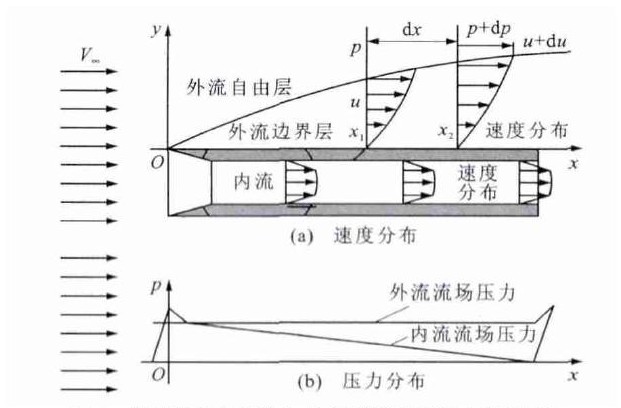Load-shedding method based on suction effect to improve wind drag of high-speed train
-
摘要: 为了提高列车在大风中运行的安全性, 利用抽吸气法控制列车绕流边界层分离, 以减小横风气动力。以中国CRH型高速列车为原型, 在车体内设计了腔室, 并通过条缝与列车表面相连, 使列车表面的绕流经列车表面条缝流入腔室内, 形成抽吸效应。研究结果表明: 抽吸气腔室和条缝的设置能够在列车高速行驶时产生低于车体外部绕流的压力, 有效地控制边界层的分离和减小列车的横风气动力。条缝倾角对气动减载效果有明显影响, 当条缝倾角为30°时, 总阻力的减载幅度可达7.21%;头车、中间车与尾车的横向力分别减载4.85%、2.71%与90.48%;头车、中间车与尾车的升力分别减载8.21%、12.56%与7.69%;头车、中间车与尾车的倾覆力矩减载幅度分别为5.29%、8.84%与57.56%。条缝倾角对不同车段气动减载率的影响不同, 尾车受条缝倾角影响的程度最大。Abstract: In order to improve the safety of train in crosswind, a new method for safety control using suction effect was discussed to control the separation of airflow boundary layers and to decrease the crosswind aerodynamic force on train. Taking CRH high-speed train of China as prototype, the pumping chambers were added in train body, and the outer surface of train was connected with pumping chambers by slots. When train was running at high speed, airflow was sucked into pumping chambers through slots to form suction effect. Analysis result indicates that the installing of pumping chambers and slots can make the pressure inside train lower than its outside airflow pressure when train is running at high speed. The separation of airflow boundary layers can be effectively controlled. The crosswind aerodynamic force on train decreases. Slot inclination angle has significant effect on decreasing crosswind aerodynamic force. When inclination angle is 30°, the decrease of total resistance is 7.21%. The decrease of lateral force is 4.85% for the first vehicle, 2.71% for the middle vehicle, and 90.48% for the last vehicle. The decrease of lift is 8.21% for the first vehicle, 12.56% for the middle vehicle, and 7.69% for the last vehicle. The decrease of overturning moment is 5.29% for the first vehicle, 8.84% for the middle vehicle, and 57.56% for the last vehicle. Slot inclination angle has different effects on the aerodynamic load-shedding rates of different vehicles. The impact of slot inclination angle on the last vehicle is greatest.
-
Key words:
- high-speed train /
- wind drag /
- load-shedding method /
- suction effect /
- aerodynamic characteristic /
- crosswind
-
表 1 倾角选择方案
Table 1. Selection projects of inclination angle

表 2 气动力比较
Table 2. Comparison of aerodynamic forces

表 3 几何位置选择方案
Table 3. Selection projects of geometric positions

-
[1] BAKER C J. The simulation of unsteady aerodynamic cross wind forces on trains[J]. Journal of Wind Engineering and Industrial Aerodynamics, 2010, 98 (2): 88-99. doi: 10.1016/j.jweia.2009.09.006 [2] CARRARINI A. Reliability based analysis of the crosswind stability of railway vehicles[J]. Journal of Wind Engineering and Industrial Aerodynamics, 2007, 95 (7): 493-509. doi: 10.1016/j.jweia.2006.10.001 [3] ANDERSSONL E, HAGGSTROM J, SIMA M, et al. Assessment of train-overturning risk due to strong crosswinds[J]. Proceeding of the Institution of Mechanical Engineers, Part F: Journal of Rail and Rapid Transit, 2004, 218 (3): 213-223. doi: 10.1243/0954409042389382 [4] BOCCIOLONE M, CHELI F, CORRADI R, et al. Cross-wind action on rail vehicles: wind tunnel experimental analyses[J]. Journal of Wind Engineering and Industrial Aerodynamics, 2008, 96 (5): 584-610. doi: 10.1016/j.jweia.2008.02.030 [5] WILSON J D, SWATERS G E, USTINA F. A perturbation analysis of turbulent flow through a porous barrier[J]. Quarterly Journal of the Royal Meteorological Society, 1990, 116 (494): 989-1004. doi: 10.1002/qj.49711649410 [6] SANTIAGO J L, MARTIN F, CUERVA A, et al. Experimental and numerical study of wind flow behind windbreaks[J]. Atmospheric Environment, 2007, 41 (30): 6406-6420. doi: 10.1016/j.atmosenv.2007.01.014 [7] 姜翠香, 梁习锋. 挡风墙高度和设置位置对车辆气动性能的影响[J]. 中国铁道科学, 2006, 27 (2): 66-70. https://www.cnki.com.cn/Article/CJFDTOTAL-ZGTK200602013.htmJIANG Cui-xiang, LIANG Xi-feng. Effect of the vehicle aerodynamic performance caused by the height and position of wind-break wall[J]. China Railway Science, 2006, 27 (2): 66-70. (in Chinese). https://www.cnki.com.cn/Article/CJFDTOTAL-ZGTK200602013.htm [8] 刘凤华. 不同类型挡风墙对列车运行安全防护效果的影响[J]. 中南大学学报: 自然科学版, 2006, 37 (1): 176-182. https://www.cnki.com.cn/Article/CJFDTOTAL-ZNGD200601033.htmLIU Feng-hua. Wind-proof effect of different kinds of windbreak walls on the security of trains[J]. Journal of Central South University: Science and Technology, 2006, 37 (1): 176-182. (in Chinese). https://www.cnki.com.cn/Article/CJFDTOTAL-ZNGD200601033.htm [9] 董香婷, 党向鹏. 风障对侧风作用下列车行车安全影响的数值模拟研究[J]. 铁道学报, 2008, 30 (5): 36-40. https://www.cnki.com.cn/Article/CJFDTOTAL-TDXB200805007.htmDONG Xiang-ting, DANG Xiang-peng. Study on influence of wind barriers on traffic safety of trains under crosswind by numerical simulation[J]. Journal of the China Railway Society, 2008, 30 (5): 36-40. (in Chinese). https://www.cnki.com.cn/Article/CJFDTOTAL-TDXB200805007.htm [10] 任尊松, 徐宇工, 王璐雷, 等. 强侧风对高速列车运行安全性影响研究[J]. 铁道学报, 2006, 28 (6): 46-50. https://www.cnki.com.cn/Article/CJFDTOTAL-TDXB200606008.htmREN Zun-song, XU Yu-gong, WANG Lu-lei, et al. Study on the running safety of high-speed trains under strong cross winds[J]. Journal of the China Railway Society, 2006, 28 (6): 46-50. (in Chinese). https://www.cnki.com.cn/Article/CJFDTOTAL-TDXB200606008.htm [11] 郗艳红, 毛军, 高亮, 等. 横风作用下高速列车安全运行速度限值的研究[J]. 铁道学报, 2012, 34 (6): 8-14. https://www.cnki.com.cn/Article/CJFDTOTAL-TDXB201206004.htmXI Yan-hong, MAO Jun, GAO Liang, et al. Research on the limited safe speed of a high-speed train under cross wind[J]. Journal of the China Railway Society, 2012, 34 (6): 8-14. (in Chinese). https://www.cnki.com.cn/Article/CJFDTOTAL-TDXB201206004.htm [12] TSUTAHARA M, NAGAHISA N, TATSUMI Y, et al. Study of reduction of the fluid force due to side wind on a running train[J]. The Japan Society of Mechanical Engineers, 1999, 65: 2595-2603. [13] WILLIAMS D R, MANSY H, AMATO C. The response and asymmetry properties of a cylinder wake subjected to localized surface excitation[J]. Journal of Fluid Mechanics, 1992, 234: 71-96. [14] LIN J C, TOWFIGHI J, ROCKWELL D. Near-wake of a circular cylinder: control by steady and unsteady surface injection[J]. Journal of Fluids and Structures, 1995, 9 (6): 659-669. [15] LING L M, RAMASWAMY B, COHEN R D, et al. Numerical analysis on strouhal frequencies in vortex shedding over square cylinders with surface suction and blowing[J]. International Journal of Numerical Methods for Heat and Fluid Flow, 1991, 3 (4): 357-375. [16] 凌国平, 方健雯. 速度-涡量法数值求解具有表面吹吸圆柱的绕流问题[J]. 应用数学和力学, 2002, 23 (9): 968-974. https://www.cnki.com.cn/Article/CJFDTOTAL-YYSX200209011.htmLING Guo-ping, FANG Jian-wen. Numerical study on the flow around a circular cylinder with surface suction or blowing using vorticity-velocity method[J]. Applied Mathematics and Mechanics, 2002, 23 (9): 968-974. (in Chinese). https://www.cnki.com.cn/Article/CJFDTOTAL-YYSX200209011.htm [17] MURALIDHARAN K, MUDDADA S, PATNAIK B S V. Numerical simulation of vortex induced vibrations and its control by suction and blowing[J]. Applied Mathematical Modelling, 2013, 37 (1/2): 284-307. [18] 毛军, 郗艳红, 杨国伟. 侧风风场特征对高速列车气动性能作用的研究[J]. 铁道学报, 2011, 33 (4): 22-30. https://www.cnki.com.cn/Article/CJFDTOTAL-TDXB201104006.htmMAO Jun, XI Yan-hong, YANG Guo-wei. Research on influence of characteristics of cross wind field on aerodynamic performance of a high-speed train[J]. Journal of the China Railway Society, 2011, 33 (4): 22-30. (in Chinese). https://www.cnki.com.cn/Article/CJFDTOTAL-TDXB201104006.htm -





 下载:
下载:















